iPad 4 (Late 2012) Review
by Anand Lal Shimpi on December 6, 2012 4:40 PM ESTDisplay Analysis
The 4th gen iPad retains the same Retina Display as its predecessor. The 9.7-inch 2048 x 1536 display looks just as good as it did earlier this year. Brightness, black levels and contrast are all very good. The real advantage however is color accuracy thanks to Apple's factory calibration on all of its devices with an integrated display.
As with all of Apple's other Retina Displays, software support is made easy through integer scaling. The 2048 x 1536 resolution is an increase of 2x in both dimensions over the standard iPad/iPad mini resolution. App developers simply have to provide 2x scaled assets in order to make the most of the Retina Display. Deciding what image to load (standard res or 2x scaled) is handled automatically, the developer just needs to ensure that it's supplying both sets of images for the best user experience. Games can run either at the panel's native resolution, or run at a non-native offscreen resolution and simply scale up to the panel resolution if the title's performance requirements are too high (more on this later).
All first party apps and most of the 3rd party iPad apps I use on a regular basis are already Retina aware.
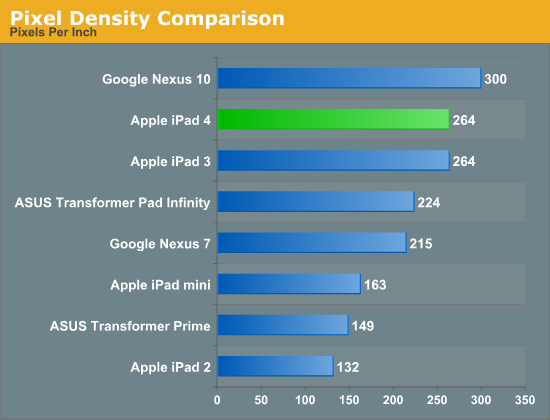
The big advantage the Retina Display offers over other iPads is a much better text reading experience. Individual letters look so much smoother:

I borrowed the paragraph shots below from our iPad mini review to give a better idea of how much of an improvement the Retina Display delivers when reading text:
Images also benefit from the Retina panel, but the advantage here ends up mostly being the accuracy of the display rather than the pixel density.

iPad mini (left) vs. iPad 4 (right)
With the exception of the 3rd generation iPad, only the Nexus 10 boasts any real competition to the iPad 4's display. I don't have a Nexus 10 on hand but Brian ran our suite of display tests on his review unit. Let's see how the two stack up in basic brightness and contrast measurements:
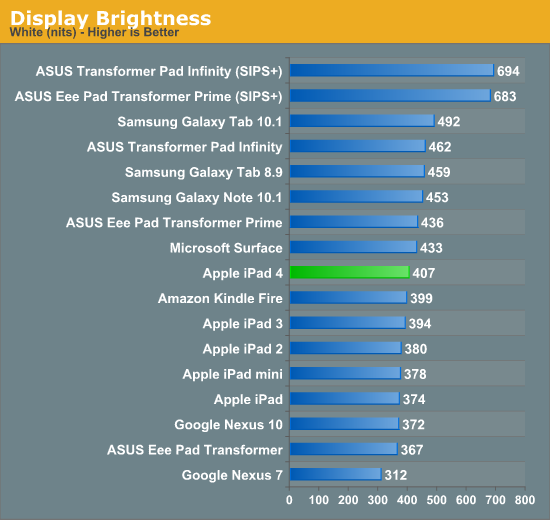
It's amazing to me that 400 nits on a nearly 10-inch display is simply middle of the pack now in modern tablets. This is just awesome. Look at any of our value notebook reviews and you'll find a bunch of displays that typically max out at sub 300 nits. It's no wonder that tablet sales are doing very well among consumers.
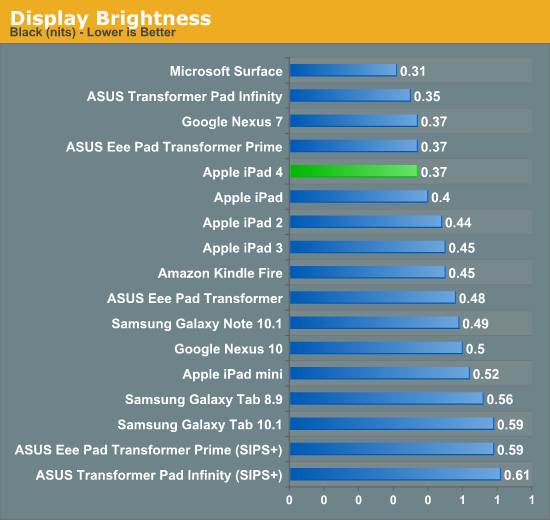
Black levels are good on the 4th generation iPad. Microsoft still holds the clear lead in black levels with its Surface RT, thanks to the tablet's bonded coverglass and display stack.
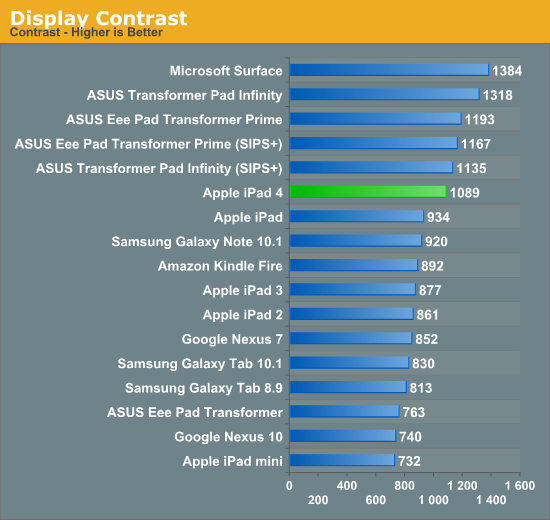
Overall contrast ratio is very good on the iPad 4. I measured a significant improvement over my iPad 3, although I suspect that has to do more with improvements to panel manufacturing than anything more deliberate.
Maintaining good brightness while pushing pixel density is only part of the equation. What made the iPad 3's display so great was that it shipped well calibrated from the factory. I assumed the same would be true for the 4th generation iPad, but I still needed to test to confirm.
To evaluate color accuracy I turned to our own Chris Heinonen's CalMAN smartphone/tablet workflow. We'll start off by looking at the calibrated white point for these tablets. What you're looking for here is a number close to 6500K:
Apple has been drifting north of 6503K for a while now. Variation in white point does seem to track well with individual panel makers in the iPad, so you may see numbers move around here depending on your luck of the draw. We've seen this in other iDevices in the past where whites will range from yellow to blue depending on what panel you end up with.
The next three charts look at accuracy represented as a difference between various source colors and what's reproduced on the display. The results are presented as average dE2000, with lower numbers being better.
First up is Grayscale performance, here we're looking at the accuracy of black, white and 19 shades of gray spread in between the two extremes:
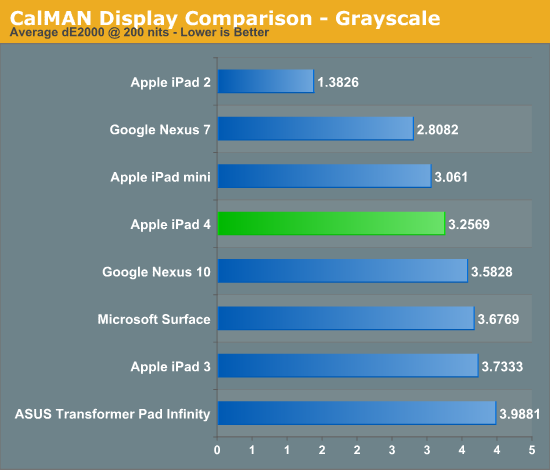
The 4th gen iPad does pretty well here, just edging out the Nexus 10 but losing to the iPad 2 and mini. Pretty much all of the tablets do a good job here at accurately reproducing grays.
First in our color accuracy tests is a saturation sweep. Here we're looking at 20%, 40%, 60%, 80% and 100% saturations of red, blue, green, magenta, yellow and cyan.
This is what you get with the iPad's pre-calibrated Retina Display: appreciably better color accuracy than any other tablet on the market today. I even measured an improvement in color accuracy compared to last year's iPad 3, however my iPad 3 was from the initial runs of production. I have noticed pretty significant variance between color accuracy between iPads. The results are always good, but some are definitely better than others.
Gamut CIE Chart
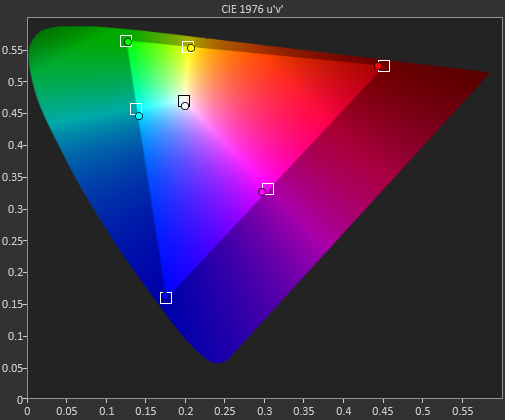
Saturation CIE Chart
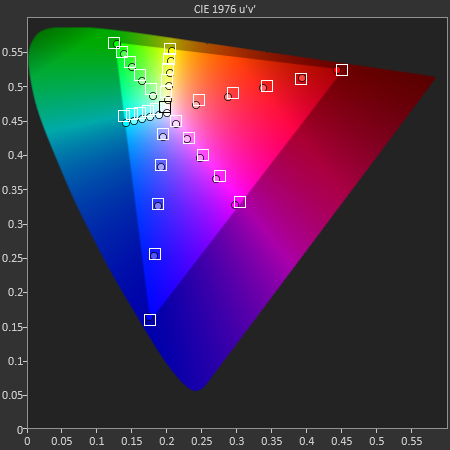
For our final accuracy test we're looking at the difference between a Gretag Macbeth colorchecker chart and the rendered swatches on these displays. Once again, lower numbers are better.
Many of the panels used here are actually good panels, the difference really boils down to calibration. Apple continues to dominate in terms of calibrated color accuracy. The 4th gen iPad's display remains the best in the industry from a color accuracy standpoint.
GMB Color Checker
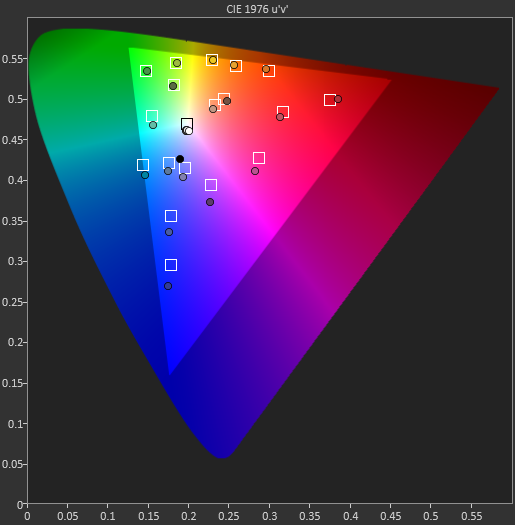




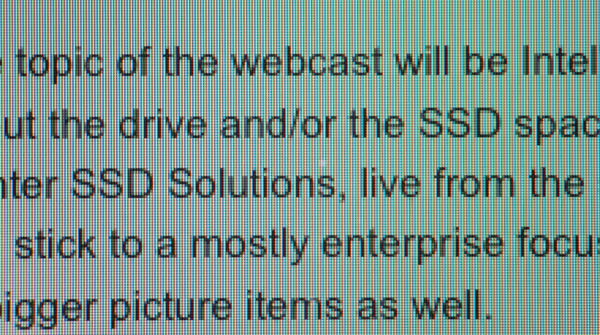
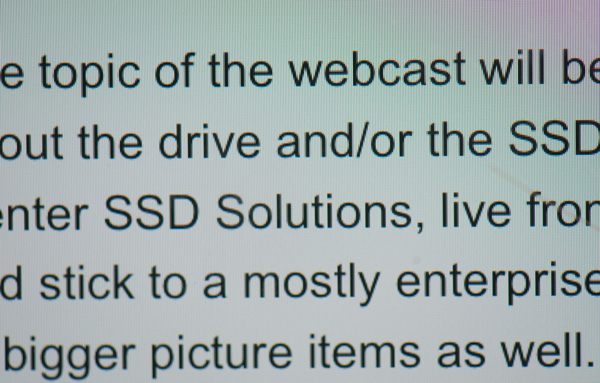
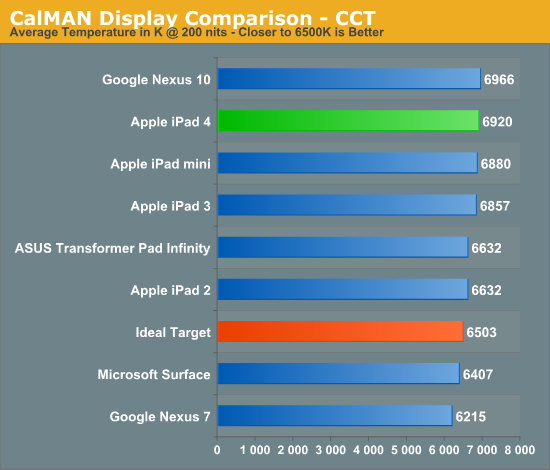
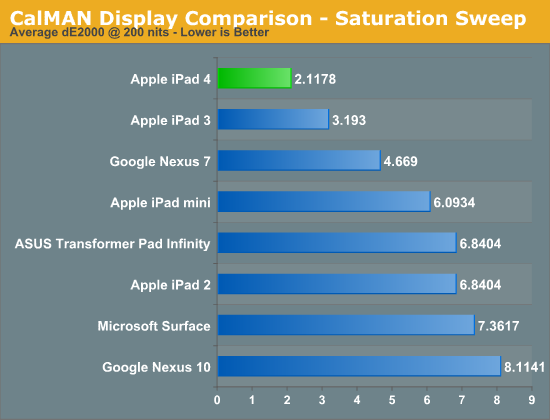
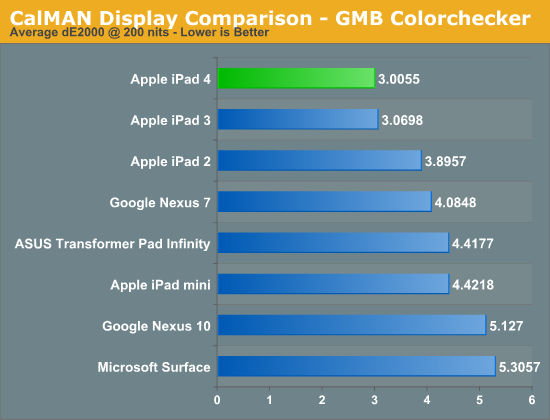








113 Comments
View All Comments
Zink - Friday, December 7, 2012 - link
HP Touchpad, oops. I live in that place RIM is from so I at least know how hard the PlayBook is failing. I wasn't trying to impact anything, just give my opinion on tablet display sizing.name99 - Sunday, December 9, 2012 - link
Reviewers of Surface, for the most part, disagree.Death666Angel - Saturday, December 8, 2012 - link
I use my tablet for playing games and watching my movies and shows when I'm on the train. Why are you telling me how to use my tablet?coder543 - Thursday, December 6, 2012 - link
How is 4:3 just amazing for books and web browsing? You're not *used* to browsing in a different aspect ratio so you say it's worse. I owned the iPad 1 and used it for a full year as my primary compute device. I even typed a 10 or more page document on the touch screen. I'm very familiar with it. But I can tell you that browsing on a 16:10 display is a wondeful experience, and now that I've gotten past the 'weirdness', I see numerous advantages for it.headrush69 - Friday, December 7, 2012 - link
What makes it's so wonderful?I find it funny because on the desktop with that same ratio, most web sites don't really seem to take advantage of the space and a full screen web browser is mostly wasted space.
Maybe you go to site's optimizing for a mobile browser, but for me, I want the normal site on my tablet, I'm not on a small screen phone.
eallan - Friday, December 7, 2012 - link
Numerous advantages that you didn't list for what reason?name99 - Sunday, December 9, 2012 - link
It IS wonderful if the primary material you read on your iPad is technical PDFs. Use a decent PDF reader to crop the margins, and you'll find that the content of pretty much all technical PDFs is at 4:3 ratio.darkcrayon - Thursday, December 6, 2012 - link
Well, the 3rd gen iPad got dinged for not having enough GPU to drive its pixels... And here we have the Nexus 10 with even more pixels than the 3rd gen iPad, but even less GPU muscle. "Much better tablet"? Ehh not seeing it. And no points for "proper aspect ratio", it was even explained in the article that it's a tradeoff. If you can't see why it isn't helpful to have an aspect ratio that is close to that of typical paper documents, I don't know that to say...coder543 - Thursday, December 6, 2012 - link
The Nexus 10's GPU muscle isn't properly represented by some benchmarks. It is honestly a cross between the iPad 3 and iPad 4 in terms of performance -- far from being worse than the iPad 3.What is the aspect ratio of legal pad? When you need paper that gets stuff done, you don't use anything resembling 4:3.
KoolAidMan1 - Friday, December 7, 2012 - link
A4 paper aspect ratio is about 4:3. I know because I read PDFs on my iPad for work all the time, fits perfectly in portrait mode.Landscape is ideal for web browsing and applications, the extra vertical space is always a good thing. Its the same reason my desktop and laptop monitors are 16:10, much better than 16:9.
All 16:9 is good for is video, and I do way more than just that on my tablet.